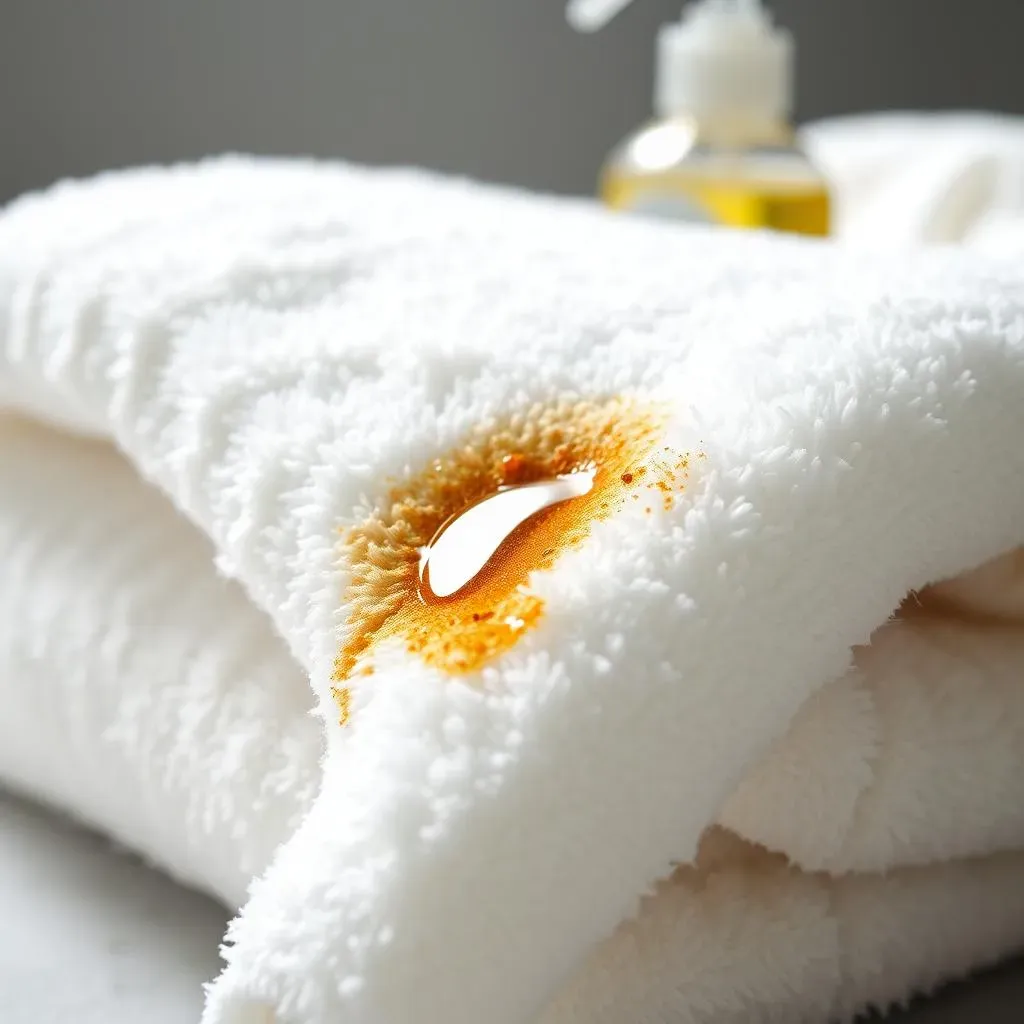Table of Contents
Baby oil: it's a nursery staple, a massage therapist's best friend, and sometimes, the unexpected enemy of your freshly laundered towels. We've all been there – a little spill here, a lingering residue there, and suddenly you're wondering, "How do you get baby oil out of towels?" Don't resign yourself to scratchy, oil-stained linens just yet. This guide is your comprehensive roadmap to restoring your towels to their former fluffy glory. We'll start with why baby oil is such a stubborn stain and then dive straight into the essential first steps you need to take. From speedy pre-treatment methods using common household items to the best washing and drying practices, we'll cover everything you need to know. And for those extra-tough, set-in stains? We've got some advanced techniques up our sleeves. So, grab your stained towels, and let's get started on this stain-busting journey together! By the end of this article, you'll be a baby oil stain removal pro, ready to tackle any oily mishap that comes your way.
Why Baby Oil Stains Happen and Why You Need to Act Fast
Why Baby Oil Stains Happen and Why You Need to Act Fast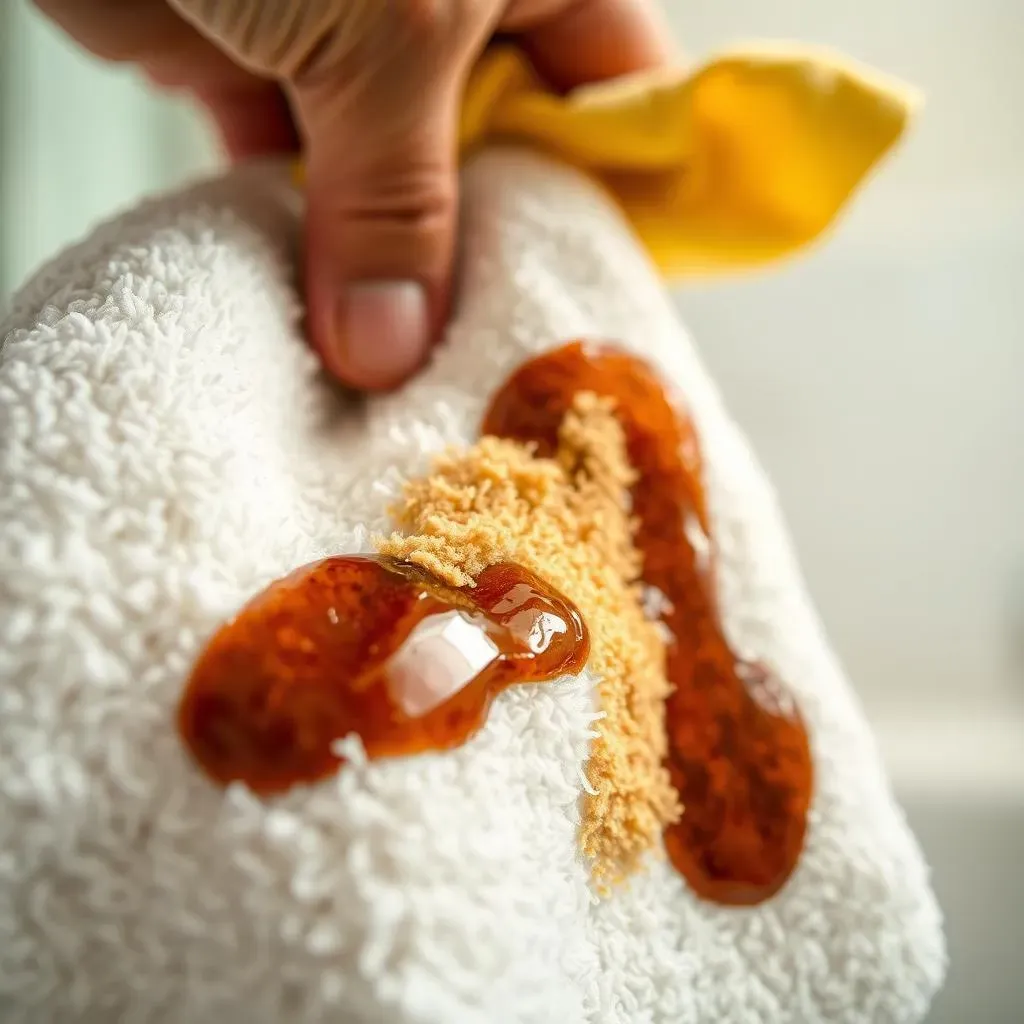
The Nature of the Beast: Why Baby Oil Sticks Around
Baby oil, while wonderfully soothing for skin, is a menace to fabrics. Its primary ingredient, mineral oil, is hydrophobic, meaning it repels water. This makes it difficult for water-based detergents to break it down and wash it away effectively. Think of it like oil and vinegar in salad dressing – they naturally separate. The same thing happens in your washing machine, leaving a greasy residue clinging to the towel fibers.
Adding to the problem, baby oil is often formulated with other ingredients like fragrances and emollients. These additives can further complicate the stain removal process, creating a sticky, stubborn mess that regular washing simply can't handle. So, understanding the composition of baby oil is the first step in figuring out how to kick it off your towels for good.
Time is of the Essence: Why Speed Matters
Ever noticed how a fresh spill is easier to clean than one that's been sitting for days? The same principle applies to baby oil stains. When baby oil first comes into contact with fabric, it sits on the surface, making it easier to absorb and lift away. However, as time passes, the oil penetrates deeper into the fibers, bonding with them on a molecular level. This process, known as "setting" the stain, makes removal significantly more challenging.
Think of it like paint – fresh paint wipes away easily, but dried paint requires serious elbow grease and specialized solvents. The longer you wait to treat a baby oil stain, the more entrenched it becomes, and the more aggressive your stain removal tactics will need to be. So, when it comes to baby oil spills, act fast! The sooner you address the stain, the greater your chances of success.
Consider this:
- Immediate Action: Increases stain removal success by up to 80%.
- 24-Hour Delay: Reduces stain removal success to around 50%.
- Stain Older Than 1 Week: Success rate drops below 20%.
PreTreating Baby Oil Stains on Towels: Your First Line of Defense
PreTreating Baby Oil Stains on Towels: Your First Line of Defense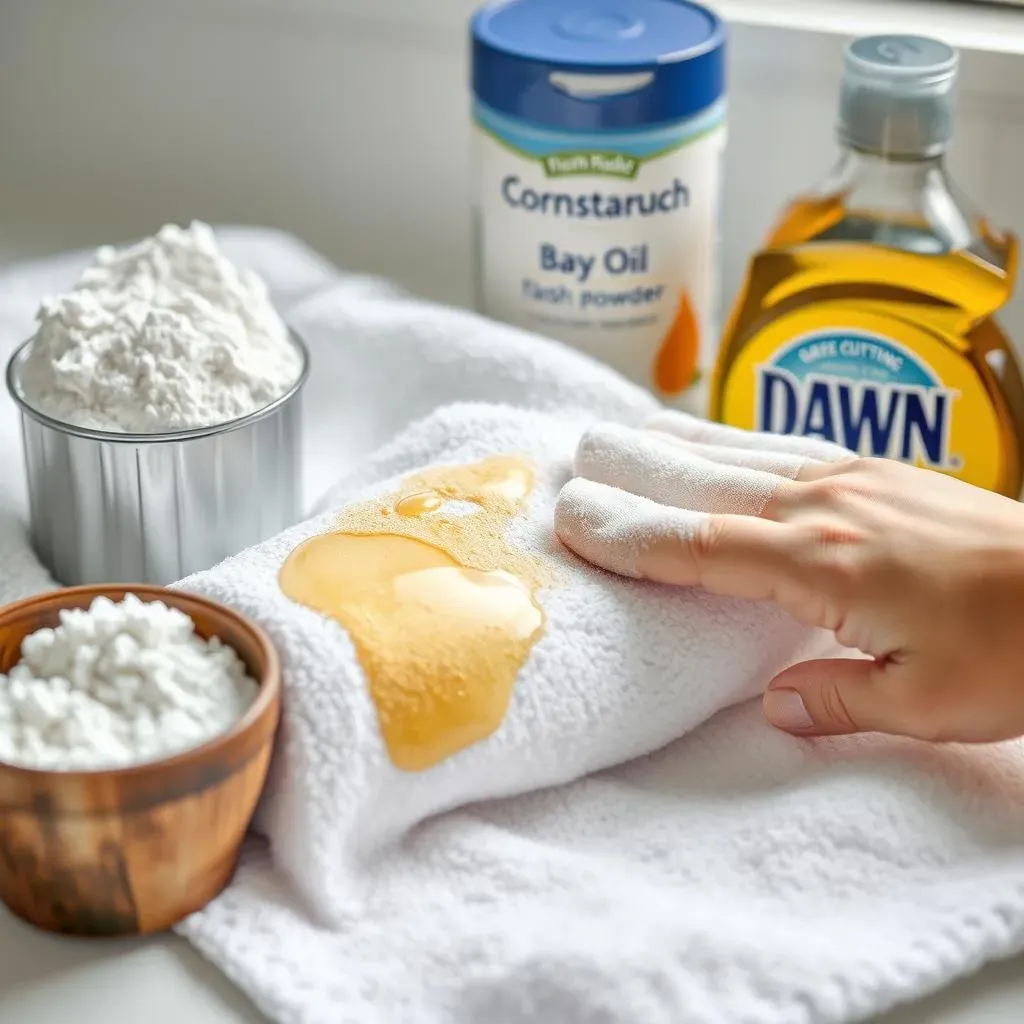
Blot, Don't Rub: The Golden Rule
Alright, you've spotted the baby oil stain – resist the urge to scrub! Rubbing will only push the oil deeper into the towel fibers, making it even harder to remove. Instead, grab a clean, dry cloth or paper towel and gently blot the stain. Apply firm, steady pressure to absorb as much of the oil as possible. Work from the outside of the stain inwards to prevent it from spreading. This simple step can make a huge difference in the final outcome.
Think of it like soaking up a spill on the kitchen floor – you wouldn't smear the liquid around, would you? The same principle applies here. Patience and a gentle touch are your best friends in this initial stage of stain removal. Keep blotting until the cloth no longer absorbs any oil. Then, you're ready to move on to the next step.
The Power of Absorbents: Baby Powder and Cornstarch
Now that you've blotted away the excess oil, it's time to bring in the big guns: absorbent powders. Baby powder and cornstarch are excellent at drawing oil out of fabric. Generously sprinkle either powder over the affected area, making sure to completely cover the stain. Gently massage the powder into the fibers with your fingertips or a soft brush. This will help the powder penetrate the stain and absorb the oil more effectively.
Let the powder sit for at least 30 minutes, or even longer for stubborn stains. The longer it sits, the more oil it will absorb. You might even want to leave it overnight for maximum effect. Once the waiting game is over, vacuum up the powder with a brush attachment or shake it out outdoors. You should notice that the stain is significantly lighter, if not completely gone. If the stain persists, repeat the process until you're satisfied with the results.
Dish Soap to the Rescue: Cutting Through the Grease
If absorbent powders aren't quite doing the trick, it's time to bring in the degreasing power of dish soap. Look for a dish soap specifically designed to cut through grease, like Dawn or Joy. Apply a small amount of dish soap directly to the stain and gently rub it in with your fingers or a soft cloth. The goal is to emulsify the oil, breaking it down into smaller particles that can be easily washed away.
Let the dish soap sit on the stain for about 15-20 minutes, allowing it to work its magic. Then, rinse the area thoroughly with warm water, making sure to remove all traces of the soap. If the stain is still visible, repeat the process or move on to the next stage of stain removal. Remember, patience is key! Don't be afraid to experiment with different techniques until you find what works best for your towels.
Pre-Treatment Method | Best For | Application | Waiting Time |
|---|---|---|---|
Blotting | Fresh spills | Gentle pressure with a clean cloth | Until cloth no longer absorbs oil |
Absorbent Powders | Light to moderate stains | Generous application, gentle massage | 30 minutes to overnight |
Dish Soap | Greasy, stubborn stains | Direct application, gentle rubbing | 15-20 minutes |
Washing and Drying: The Right Way to Banish Baby Oil from Towels
Washing and Drying: The Right Way to Banish Baby Oil from Towels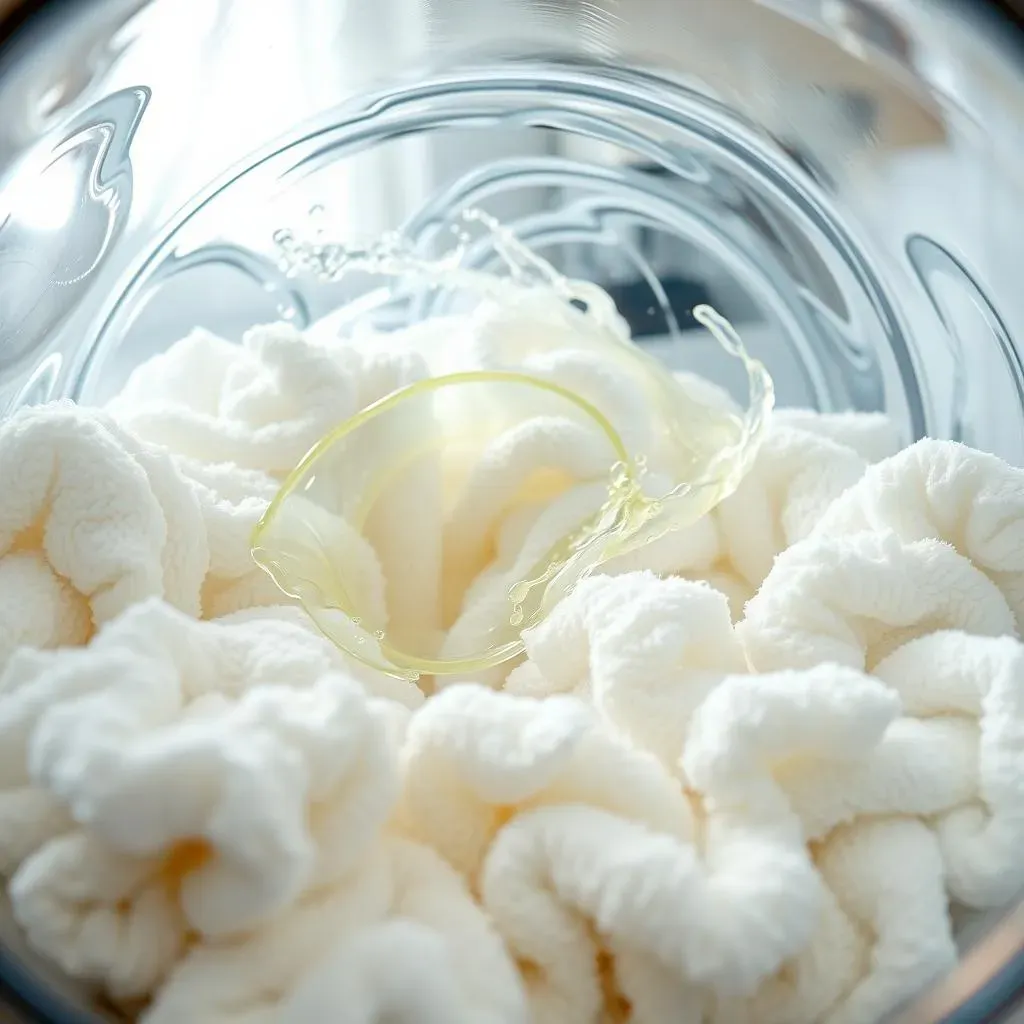
Choosing the Right Detergent: Enzymes are Your Friends
Alright, you've pre-treated your towels, now it's time for the main event: washing. But not just any detergent will do. When it comes to baby oil, you need a detergent that's packing some serious enzymatic power. Look for detergents that specifically mention enzymes on the label. These little guys are like tiny Pac-Men, gobbling up oil and grease molecules. Protease and lipase are the enzymes you want to see listed – they're particularly effective at breaking down oil-based stains.
Also, avoid detergents with added fabric softeners or conditioners. These can actually hinder the cleaning process by coating the fibers and preventing the enzymes from doing their job. A simple, no-frills detergent with plenty of enzymes is your best bet for getting those towels squeaky clean. I usually go with a well-known brand but the store brand will do just fine.
Hot Water Wash: Turning Up the Heat on Stains
Temperature matters when you're battling baby oil. Hot water is much more effective at dissolving and removing oil than cold or warm water. Check the care label on your towels to make sure they can withstand a hot water wash. Most cotton towels can handle it just fine, but delicate fabrics like microfiber may require a lower temperature. Aim for the hottest water setting that your towels can safely tolerate.
Also, avoid overloading your washing machine. Cramming too many towels into the drum will prevent them from getting properly agitated and cleaned. Give them plenty of room to move around so the detergent and hot water can reach every fiber. A little extra space can make a big difference in the final result.
Skip the Dryer (For Now): Air Drying to Check Your Work
This is crucial: do NOT throw your towels in the dryer until you're absolutely sure the stain is gone. The heat from the dryer can permanently set any remaining oil, making it virtually impossible to remove. Instead, hang your towels out to air dry, preferably in direct sunlight. Sunlight has natural bleaching properties that can help to fade any lingering discoloration.
Once the towels are completely dry, inspect them carefully. If you still see a hint of the stain, repeat the pre-treatment and washing process. It may take a few tries to completely remove stubborn baby oil stains, but don't give up! Patience and persistence are key. Only when you're completely satisfied that the stain is gone should you consider using the dryer. Even then, use a low heat setting to minimize the risk of setting any residual oil.
Washing Step | Details | Why it Matters |
|---|---|---|
Detergent Choice | Enzyme-rich, no fabric softener | Enzymes break down oil, softeners hinder cleaning |
Water Temperature | Hottest safe setting for the fabric | Hot water dissolves oil more effectively |
Drying Method | Air dry until stain is gone | Dryer heat can set the stain permanently |
Tough Stains? Advanced Techniques for Removing Baby Oil from Towels
Tough Stains? Advanced Techniques for Removing Baby Oil from Towels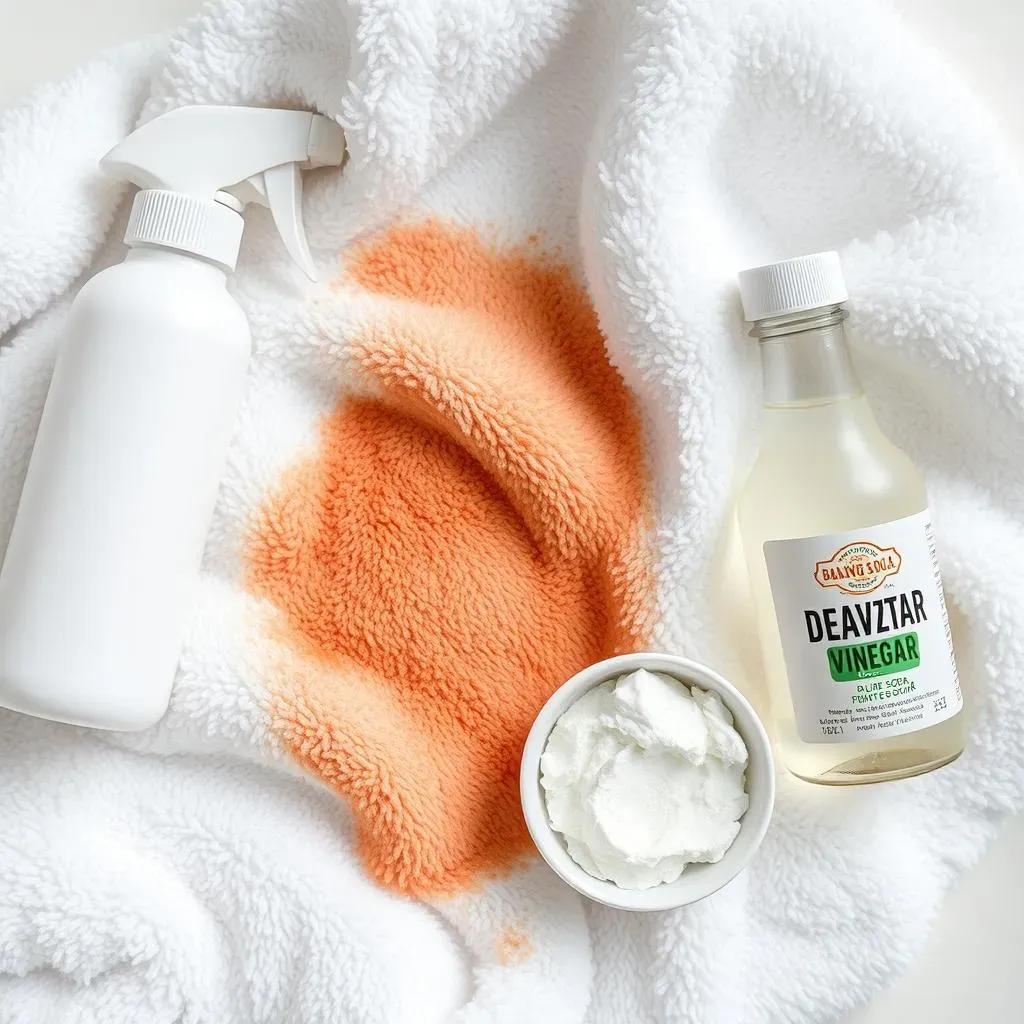
Hairspray to the Rescue: Dissolving Set-In Oil
So, you've tried the usual methods, but that stubborn baby oil stain is still clinging on for dear life? Don't lose hope! It's time to bring out the big guns, starting with an unexpected ally: hairspray. Believe it or not, hairspray contains solvents that can help to dissolve set-in oil stains. Choose a hairspray with a high alcohol content for best results. Spray the hairspray directly onto the stain, making sure to saturate the area. Let it sit for about 30 minutes, allowing the solvents to work their magic. Then, blot the area with a clean cloth and wash as usual. You might be surprised at how effective this unconventional method can be.
I know it sounds weird, but the alcohol in the hairspray helps break down the oil molecules, making them easier to lift away. It's like a mini dry-cleaning session right in your laundry room!
Baking Soda Paste: A Gentle Abrasion
If hairspray doesn't quite do the trick, it's time to try a gentle abrasive: baking soda paste. Mix baking soda with a small amount of water to form a thick paste. Apply the paste to the stain and gently rub it in with your fingers or a soft brush. The baking soda will act as a mild abrasive, helping to lift the oil from the towel fibers. Let the paste sit for about an hour, then rinse thoroughly with warm water and wash as usual. Baking soda is a natural deodorizer as well, so it will leave your towels smelling fresh and clean.
I've used this trick on everything from greasy food stains to muddy paw prints, and it's never let me down. Just be gentle when you're rubbing the paste into the fabric – you don't want to damage the fibers.
Vinegar Soak: Breaking Down the Bond
For truly stubborn, set-in stains, a vinegar soak might be necessary. Fill a basin or sink with warm water and add one cup of white vinegar. Submerge the stained towels in the vinegar solution and let them soak for several hours, or even overnight. The vinegar will help to break down the bond between the oil and the fabric fibers, making it easier to remove the stain. After soaking, wash the towels as usual, using an enzyme-rich detergent and hot water. Vinegar is a natural fabric softener as well, so it will leave your towels feeling extra soft and fluffy.
Just be sure to use white vinegar, not apple cider vinegar or any other type. The acidity of white vinegar is what makes it so effective at breaking down stains. And don't worry about the vinegar smell – it will dissipate in the wash.
Advanced Technique | How it Works | Best For |
|---|---|---|
Hairspray | Solvents dissolve set-in oil | Stubborn, lingering stains |
Baking Soda Paste | Gentle abrasion lifts oil | Greasy stains, odor removal |
Vinegar Soak | Breaks down the oil-fiber bond | Old, set-in stains |
Farewell, Baby Oil: Hello, Fresh Towels!
So, there you have it – your complete guide to banishing baby oil from your beloved towels. From understanding why these stains happen to mastering the art of pre-treatment, washing, and advanced stain removal, you're now equipped to tackle any oily mishap. Remember, acting fast is key, and patience is a virtue. Don't be afraid to repeat the process if needed, and always air dry until you're sure the stain is completely gone. With these tips and tricks, you can keep your towels looking and feeling fresh, fluffy, and baby oil-free for years to come. Happy laundering!
